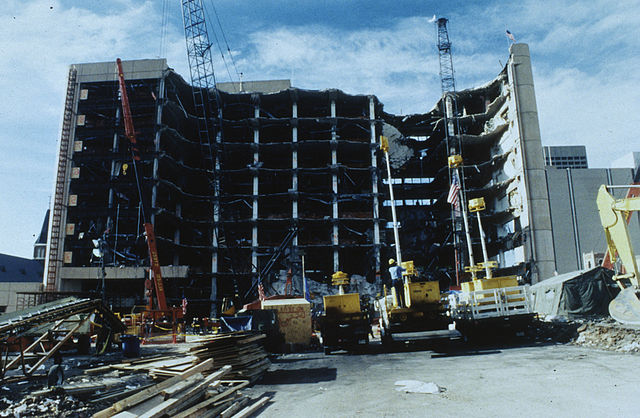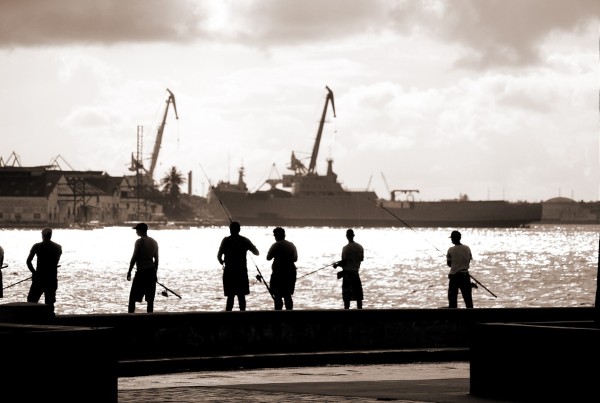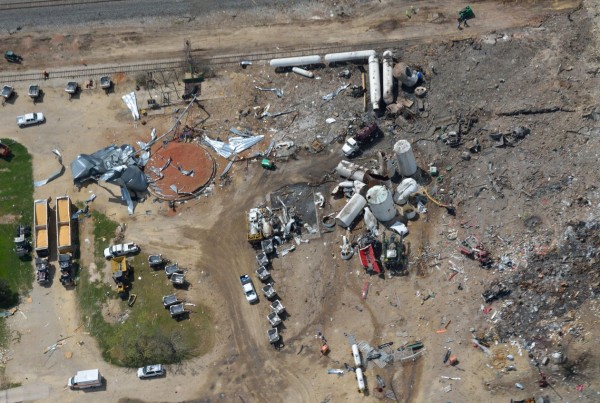On April 19th, 1995, two men connected to armed militias, Timothy McVeigh and Terry Nichols set off a truck bomb next to the Alfred P. Murrah Federal Building in Oklahoma City. The explosion killed 168 people inside including 19 children, and damaged over 300 buildings within a 16 block radius of the explosion.
In response, armed militias began to scatter, and for a decade, their numbers dropped – but that’s changing.
A student in Professor Catherine Stock’s class at Connecticut College recently asked her an interesting question:
“’Why doesn’t anyone remember what happened in the Oklahoma City bombing? As soon as 9/11 happened this seemed to have faded into people’s memories,’” Stock recalls the student asking.
“I thought that was an interesting comment because, at the time, it was a profoundly disturbing event – that two men, one of whom was in the Michigan militia… decided to destroy federal property in revenge for what had happened in Waco and Ruby Ridge – and that they did so, really easily,” Stock says.
“They drove up with a truck that had fertilizer, turned it into a bomb.”
Stock details the rise of militias at the end of the last century in her book, “Rural Radicals.” She says militia members across the country, opposed then-President Bill Clinton and the federal government’s stance on everything, from NAFTA to the Brady gun control bill.
“You might not agree with them, but you can’t ever understand them, or understand the past, if you don’t take their beliefs seriously,” Stock says.
Danny Davis Directs the Certificate of Homeland Security Program at Texas A&M. He says militias champion the early American revolutionaries and their fight to limit the power of a tyrannical government.
“You mention the Oklahoma City anniversary, but that’s also the anniversary of opening fire of the Revolutionary War, at Lexington,” Davis says.
“They’re not anti government in their minds – they think the federal government is headed in the wrong direction.”
April 19 was also the anniversary of the siege at the Branch Davidian complex in Waco. Two years before Timothy McVeigh bombed the federal building in Oklahoma City, 76 people had died after a weeks-long standoff between the ATF, Texas law enforcement and the Branch Davidians – who had stockpiled arms and ammunition in their compound.
But according to groups who track militias, after Oklahoma City, everything changed. They began to dissolve – even in Texas.
“I think you have to see that the Oklahoma City bombing was an event that made militias have to think twice about their role,” Stock says.
While the country focused on foreign threats after the 9/11 attacks and the wars that followed, militias pulled out of the spotlight, and membership plummeted. That is, until 2008.
“Obama was elected – that was when there was a big upswing in the number of militias again,” Davis says. “A lot of people were very afraid that people were going to come and get their guns.”
In Texas, now, the focus is less on Washington and more on the border. Some militias, like the Minutemen, patrol private land to stop illegal immigration. JP Rodriguez is with the Hidalgo County Sheriff’s Office, and he says militias are not needed.
“As you may know, the area is saturated with DPS, so there’s a significant law enforcement presence here in South Texas,” Rodriguez says. “We feel that we’re best equipped to take any type of enforcement act here on the border.”
But as long as the militias stay on private property and out of the way of law enforcement, there isn’t anything the Sheriff’s office can do about them.












